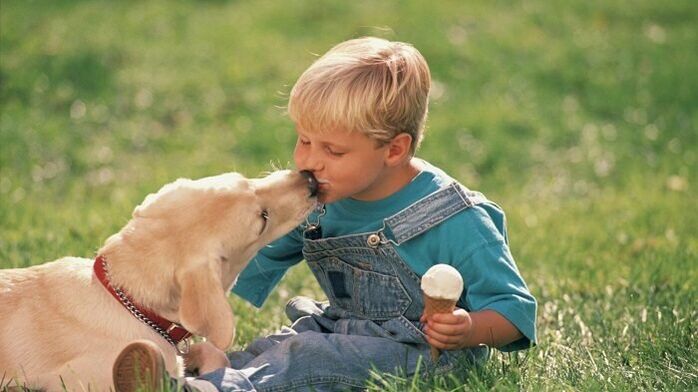
Helminth infections are one of the most common diseases in children. According to official statistics, more than 20 million people are affected by helminth infections, 80% of which are children. Symptoms of the presence of worms in the body are not always obvious. Review of the main signs of helminth infections in children, treatment methods and preventive measures.
Types of worms
There are more than 3 hundred types of worms. All of them can be divided into three groups:
- Nematodes (pinworms, roundworms, whipworms).
- Tapeworms (beef tapeworm, pork tapeworm).
- Fluke worms (Cats and Siberian flukes).
Usually, children infected with worms belong to the first group. Among them:
- Roundworms are long, pointed worms. The color can be different: from pink to yellow. Adults parasitize the small intestine. Roundworms reproduce at a high rate - the female can lay up to 240 thousand eggs per day;
- Pinworm - belongs to the species of roundworm and is small in size. They are usually white or slightly yellow. Females lay eggs near the anus and in the perineum. The eggs become infectious after a few hours.
- Vlasoglavs are roundworms with a thin front end that can puncture the intestinal wall. At the same time, flagellate worms soaked his blood and poisoned the rest of his organs with their waste. Secretions are absorbed into the bloodstream and carried throughout the body.
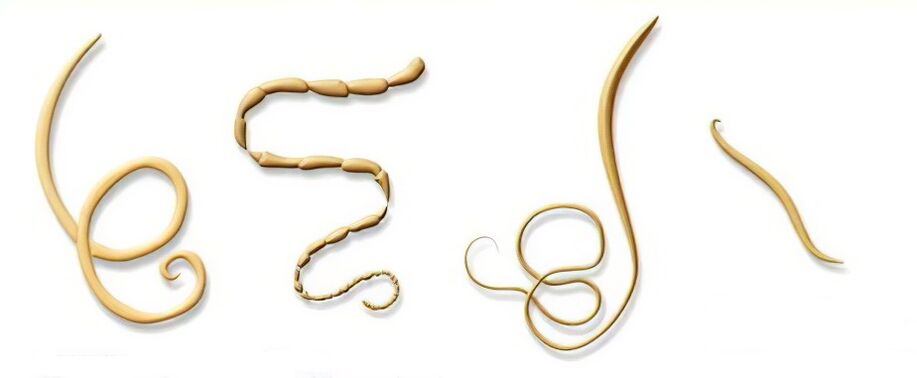
Important! Sometimes parents do not even suspect that helminths have settled in the body of their child. In the chronic stage, the disease may be asymptomatic.
Experienced doctors say that, with a thorough examination, it is possible to find worms even in a seemingly healthy child.
How children get infected
It would be fundamentally wrong to assume that worm infections occur as a result of inadequate child care. Cases of worm infestation are not uncommon in well-to-do children. The main source of infection is dirty hands. An active child explores the world around him and spends a lot of time outdoors, in the garden, on the playground and in the sandbox. These are the places where worm eggs accumulate significantly. There are frequent cases of infection from animals that children love to play with.
Unwashed vegetables and fruits are another danger. In particular, species that have fruit in contact with the ground, such as strawberries, should not be eaten unwashed.
Important! You should not think that peeled fruit (banana, tangerine, orange) will be absolutely safe. Before eating, they should be washed thoroughly like other fruits.
You can get worms from eating raw cow's or goat's milk. If the animal is raised in unsanitary conditions, it is not surprising that parasites have settled in its milk. Another cause of worms can be undercooked meat and fish.
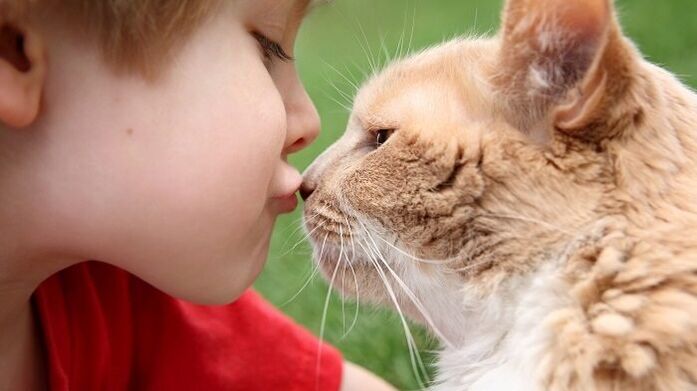
Infection cannot be avoided if children have not developed the habit of washing hands before meals and after using the toilet. Bad habits like nail biting, thumb sucking, and biting the tip of a pen or pencil are not at all harmless, as it may seem at first glance because a child's hands are not always clean enough. It is completely unacceptable for a child to pet or carry a stray dog or cat.
General symptoms
All manifestations of worm infection can be divided into general and individual, which are characteristic of several types of parasites. The presence of general intoxication in the body of children can be assessed by the general manifestations of worm lesions:
- stool disorders (constipation, diarrhea);
- frequent dizziness, nausea, bad breath;
- marked weight loss due to parasites absorbing most of the nutrients from food;
- dermatological diseases (skin rashes, papillomas, lobes, brittle nails);
- nervous system disorders (mood, lacrimation, poor sleep and chronic fatigue of the child);
- low hemoglobin levels;
- disorders of immunity, leading to frequent viral diseases;
- low resistance to respiratory diseases (sinusitis, nasal polyps, adenomas);
- allergic reaction.
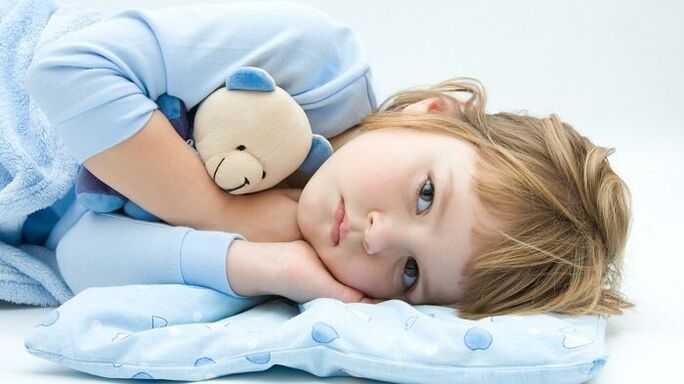
Important! Routine preventive vaccinations can be an indication of the presence of parasites. If it is accompanied by severe allergic reactions, it is necessary to visit a parasitologist!
Signs of pinworm infection
Interested parents want to know what worms look like in a child's stool. Usually, pinworms can only be seen in the child's pot or near the anus in severe cases. As a rule, it is rarely possible to see them with the naked eye. But a caring mother will always pay attention to the following symptoms:
- anal itching;
- pain in the abdomen, especially around the navel;
- drooling, nausea;
- anxiety of a child who often wakes up or tosses in sleep;
- grinding teeth while sleeping (no solid medical evidence).
If the child has anal itching, especially at night, this leads to parasites on the hands, and then on the skin of the whole body. As a result, inflammatory skin diseases can occur. Anal picking is also dangerous in that it contributes to reinfection of pinworms when children do not wash their hands but pick up food, toys, or put them in their mouths.
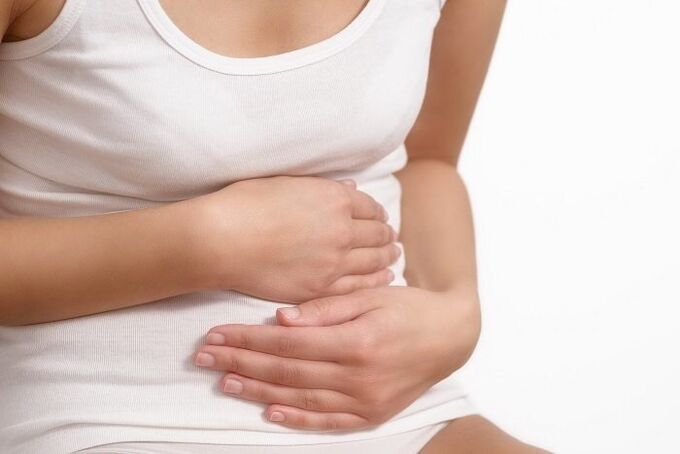
Young girls are more at risk of pinworms entering the external genitalia, where the female crawls from the anus. This infection is accompanied by urinary incontinence and heavy discharge from the genitals. If not treated properly, it can lead to significant developmental delays in a child's growth and physical development.
Harmful symptoms of roundworms and roundworms
Unlike pinworms commonly found in temperate climates, roundworms prefer warm, humid air. Ringworm infection is suspected when a child, in the absence of respiratory illness, begins to have a dry cough, which is worse at night. This is due to the fact that the parasite moves throughout the body. Other symptoms include a rash on the body, fever, pale skin, and dark circles under the eyes. With the severe form of the disease, cholecystitis, neurological disorders and epileptic seizures are possible.

Ringworm infection is often sluggish or asymptomatic, but can cause bloody diarrhea, anemia, and physical retardation.
Diagnosing helminths
If a child is suspected to be infected, a series of tests and studies should be performed. Diagnostic methods will determine the type of parasite. The child needs to pass:
- analyze feces for worm eggs - you need to rest for several days;
- dysbacteriosis analysis - establishing the difference between the E. coli index against the norm;
- general blood test to determine the level of iron in the body;
- scrape pinworms.
Important! A single analysis for the presence of helminths in stools in many cases failed to detect parasites in the child's body. Re-examination of stool is very important.
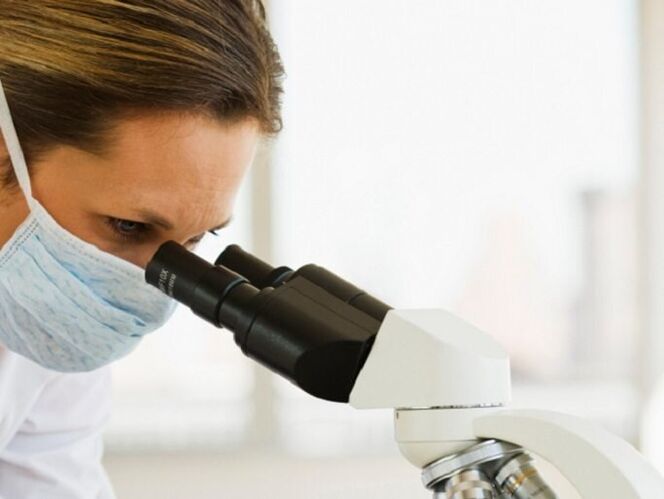
Because pinworms and roundworms quickly die outside of the human body, stool analysis for the presence of helminths should be obtained as soon as possible after a bowel movement. Pinworm removal should be done at least once a year. This is a must when a child enters daycare, school or hospital.
To eliminate the risk of parasites entering other internal organs, ultrasound, endoscopy and computed tomography are performed.
Features of worm disease in infants
Usually, worm infections in children appear after 1 year of age. This is a period of active understanding of the world, when babies love to study the objects around them, taste them. However, helminthic infections are also seen in infants. Such diseases are considered a very serious problem, causing great harm to organisms that are still defenseless.
One of the main causes of the disease is infection with helminths while in the womb. If the pregnant mother herself is a carrier of worms, then their larvae during pregnancy can enter the fetus through the placenta. Infection can occur during the baby's passage through the mother's birth canal. So, before the baby is born, the baby is already a carrier of the worms.
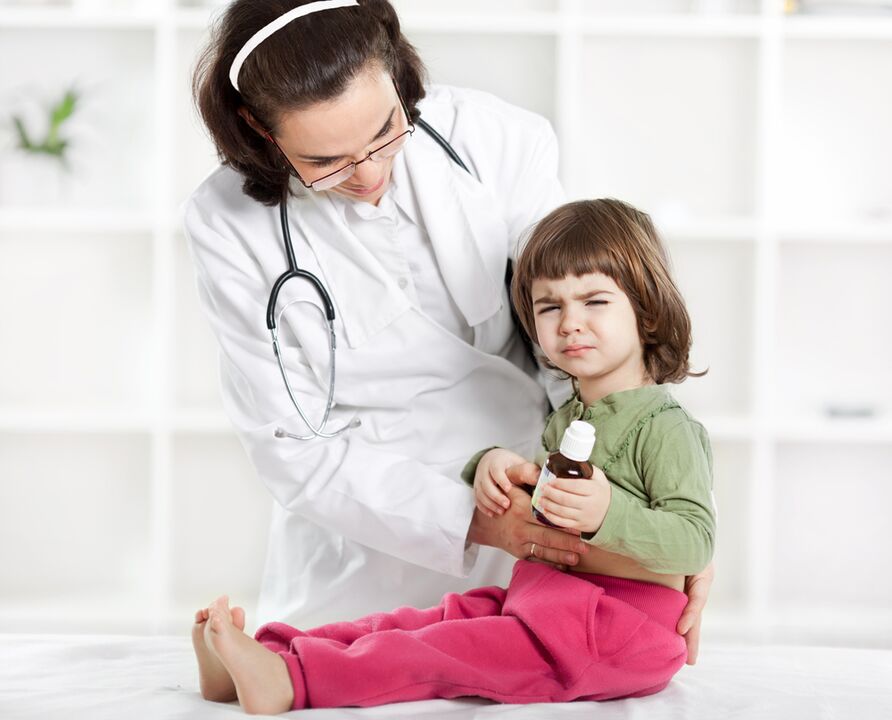
The risk of helminth infections in infants increases as they begin to crawl. If you have a pet at home, if you do not follow basic hygiene rules, it is easy for your baby to accumulate all kinds of bacteria and parasites in the body.
An effective diagnosis is much more difficult in infants than in children 1 year of age and older. Signs of helminthiasis in infants can be bowel disturbances, inflammation around the anus and around the labia in girls, poor appetite and weight loss, irritability and anxiety. Even in cases where the possibility of infection is not significant, you still need to take the child to the doctor and do the necessary tests.
Traditional methods of treatment
In most cases, the treatment of helminthiasis takes some time. The child should be taken to a pediatrician, parasitologist and pediatric gastroenterologist. Drug treatment takes place in three stages: a phase of detoxification from the body, a phase of deworming therapy, and a subsequent cleansing and strengthening phase.
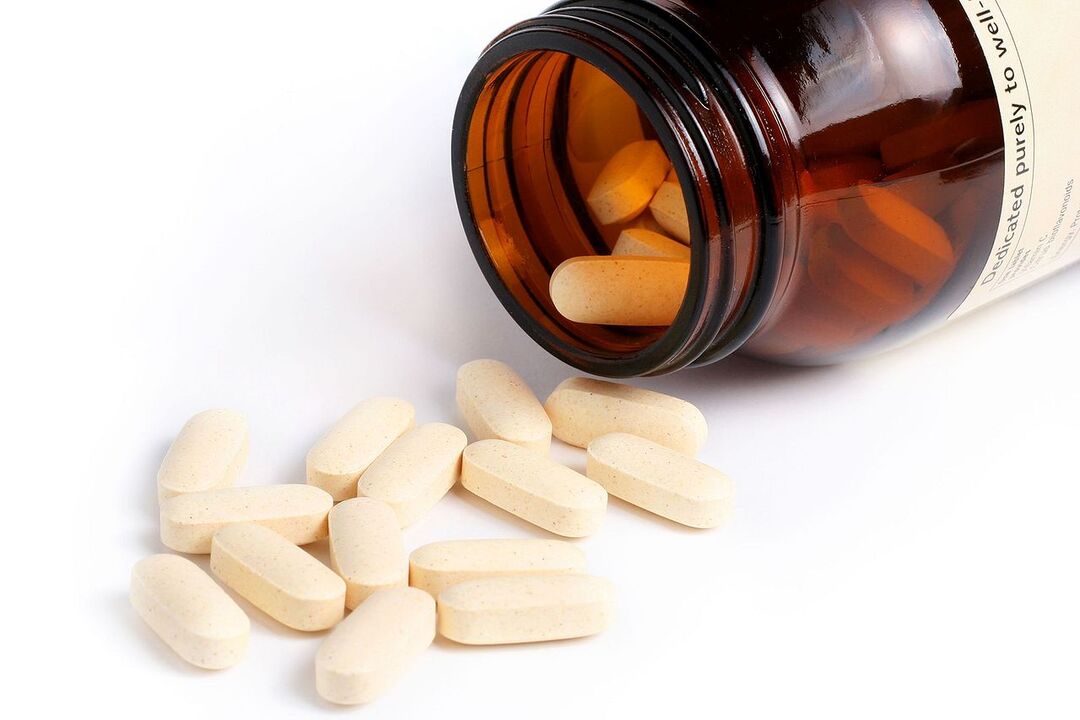
Preparations for worms
Before using antiparasitic drugs, children are prescribed desiccants to cleanse the body and antihistamines to reduce inflammation and manifestations of allergies. Next is to take deworming pills.
Important! Deworming preparations are very toxic, so they should only be taken as prescribed by a doctor, following the prescribed dosage! Do not use strong drugs for prevention!
When prescribing the drug, the age of the child, the severity of the disease and the risk of side effects must be taken into account.
Tablet formulations can be given to older children who are already able to swallow tablets. It is not uncommon for children to refuse to swallow or spit out. Do not crush or crush the tablet. You can try giving it to your child while playing or with food. For infants and one-year-old children, the drug in the form of a suspension is more suitable. Antiparasitic agents act according to the following scheme: the first method destroys adult helminths, the next prevents the maturation and reproduction of larvae.
Side effects often indicate the death of parasites under the influence of the drug. To get rid of them, you can drink activated charcoal. But this is not done earlier than after 24 hours, otherwise the effect of the dewormer will be reduced. In some cases, complex antiparasitic regimens may be prescribed, including several medications. Anthelmintic drugs have a number of contraindications. The drug is not prescribed to children with malignant tumors, certain blood diseases and liver dysfunction.
To eliminate severe itching in the anus, anesthetics are prescribed to relieve the sensation of irritation and burning. Zinc oxide combined with beeswax or glycerin relieves itching and creates a protective film in the anal area.
Important! Along with drug treatment, it is necessary to carry out general cleaning of the house. To do this, you need to carefully wash and iron bed linen, treat children's utensils and toys, and destroy cockroaches and bedbugs in the house.
During treatment, special attention is paid to the diet. Protein foods, fermented dairy products are recommended. Foods rich in fiber are beneficial for normal digestion and timely bowel movements. It is better to exclude sweets and baked goods from the diet.
How to get rid of parasites at home
Folk remedies presented in many recipes allow you to deworm at home. Treatment with folk methods not only helps in deworming, but also has a beneficial effect on the vital functioning of the child's organs. Consider the most effective traditional remedy.
Enemas
With the help of an enema, the decay products of helminths can be expelled from the intestines, and even after death, they continue to infect the child's body. You should add a few cloves of garlic and a teaspoon of salt to the water to do the trick. Such an aqueous solution is better absorbed into the intestines. Before the procedure, the mixture is boiled and allowed to cool to 36 degrees. Sauna with garlic water is also very suitable for young children. During the procedure, there is a risk of helminths moving through the intestines. To avoid this, you should drink plenty of water before placing the enema.
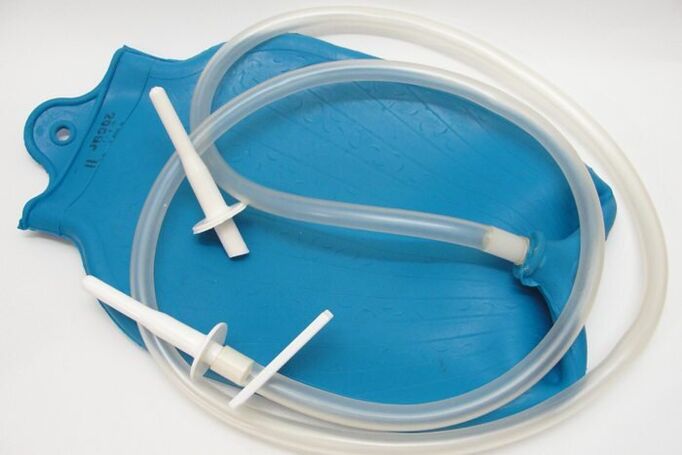
To repel worms, you can put garlic in hot milk, pour the mixture into a pot and have your baby sit on it. Worms will crawl out under the influence of garlic smoke. When performing such procedures, you need to be very careful not to burn the child's skin.
Wormwood plant
Tansy has gained a reputation as an excellent remedy for pinworms and roundworms due to its toxic essential oil. They are successfully used to expel parasites from the human body. The only caveat: for successful treatment, a large dose is required, designed for adults. On the question of whether it is possible to give tansy to children as an anthelmintic, there can be no definite answer. The remedy has a rather long list of side effects: nausea, vomiting, high blood pressure, seizures.
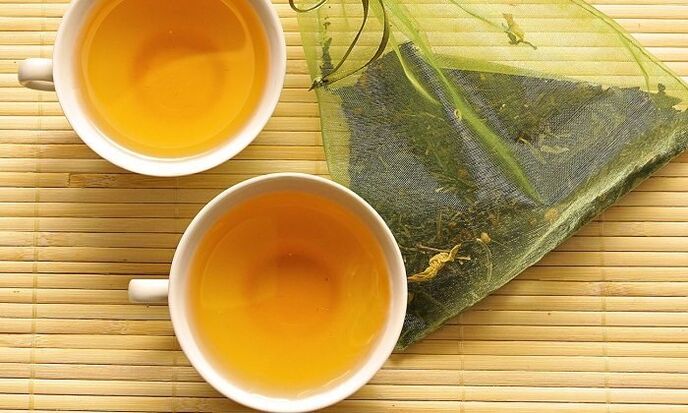
Important! The decoction is prescribed only for children 10 years of age and older, weighing 30 kg or more. Preschool children if taking deworming drugs will be very dangerous.
Pumpkin seeds
This simple tool has been known since ancient times and was used by our ancestors. Pumpkin seeds, loved by many, work as an excellent remedy for parasites. Instead of seeds, you can give pumpkin seed oil that is sold in pharmacies. It is taken half an hour before meals. For young children who still can't eat seeds, you can cook pumpkin broth. For this, the seeds are crushed, poured with boiling water and kept in a water bath. The resulting liquid is infused for 24 hours and taken after stress.
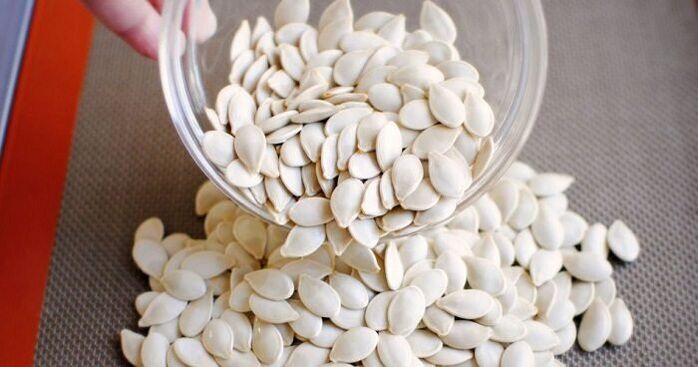
Onion
Pour boiling water over the chopped onions and soak for 12 hours. This infusion is taken orally for several days. Onions and garlic are great for everyday meals.
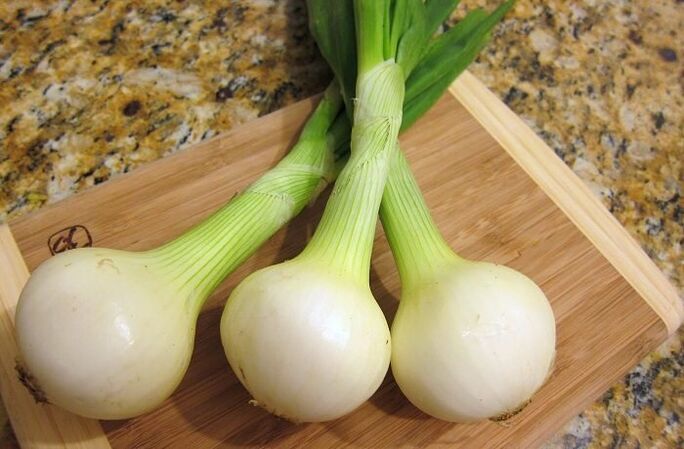
Fruit juice
Carrot juice is considered the most popular in the treatment of worms. It definitely has to be freshly squeezed. Useful juices from beets, pomegranates and cabbage, as well as infusions from rose hips. However, you need to understand that it is not possible to get rid of helminths with juice alone. Therefore, their use on an empty stomach is considered part of a comprehensive therapy against helminthiasis.

Natural vegetable oil
Hemp, flaxseed, and cedar oils have anti-parasitic properties. They are completely safe for babies. You can wet a cotton ball in oil and apply it to your child's anus at night. By this action, the pinworm eggs will be destroyed which the female will lay while the baby sleeps.
Doctor about worm treatment
In his televised speech, the famous doctor noted that it is possible to achieve success in the treatment of filariasis with the help of modern drugs. The doctor especially recommends that parents do not self-medicate and need to consult a specialist in time.

In this case, it is important to determine which worms have attacked the baby and which medications will work most effectively for the baby. From folk remedies, a well-known doctor recommends pumpkin seeds, recommending a dosage of 300 grams each time. But grinding teeth in a dream is a sign of a worm infestation, which experts say is a fantasy.
Prevention of helminth diseases
To minimize the possibility of parasitic infection, the following precautions should be observed:
- ensure that children wash their hands as often as possible, especially before meals and after using the toilet;
- do not drink raw water;
- do not eat raw meat or fish;
- wash vegetables and fruits thoroughly;
- do not allow children to touch stray dogs and cats, regularly give deworming drugs to pets;
- wash children's toys daily;
- cut nails short, under which parasite eggs often accumulate;
- compliance with personal hygiene and cleanliness of housing;
- In the fall and spring, treat prophylactically with an anthelmintic with the whole family.
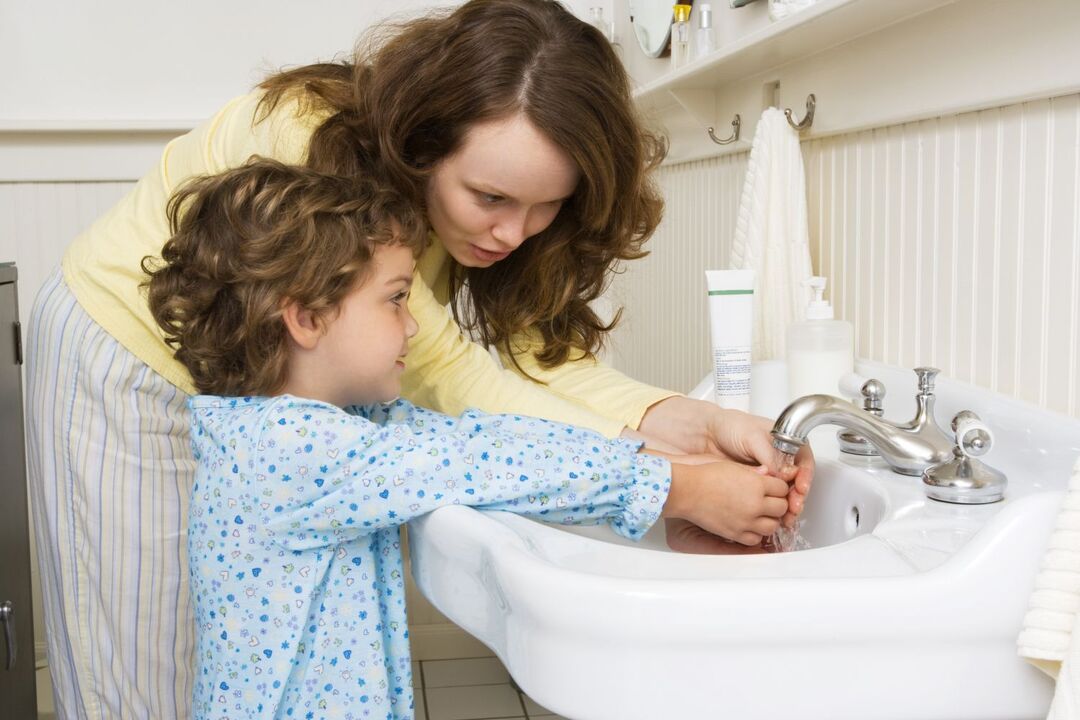
Compliance with all the rules is not an absolute guarantee of protection from parasites, but it significantly reduces the risk of infection and its serious consequences.





























